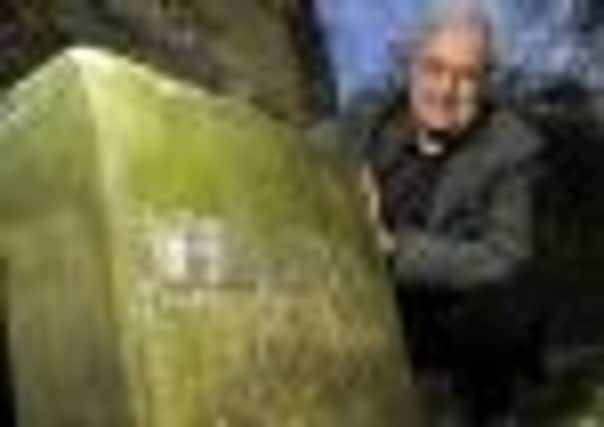First Scots Astronomer Royal’s grave found


Now the city where Henderson made his name as one of astronomy’s greatest minds is set to hear a lot more about the humble genius – after a local scientist stumbled upon his headstone in Greyfriars Kirk and announced plans to establish an astronomer’s tour.
Retired physicist Bruce Vickery said he was stunned and overjoyed by the find, which came out of the blue after months of searching.
Advertisement
Hide AdAdvertisement
Hide Ad“I’d wanted to actively look for him for a long time,” said Mr Vickery, 68.
“About six months ago, I got to the point where I thought, ‘right, I will go down there’ – only to find they had no record of him being in the churchyard, even though I knew he was buried there from my own research.
“I thought I knew where in the graveyard he was buried but it was a real challenge to find.
“It’s a very humble grave, very weathered. It’s also one of these gravestones that don’t have black lettering. The name is just chiselled in.
“Because of all of those things, it’s something you just don’t see. I really thought it would be something grander given he was the country’s first Astronomer Royal.
“Instead, it was tucked away in a corner behind a bit of bush and overgrown shrubbery.”
Henderson was the first scientist to measure the distance to a nearby star when he calculated there were 3.25 light years between Earth and Alpha Centauri.
Although the star maps he created were used by counterparts around the world, Henderson remained an intensely private individual.
Advertisement
Hide AdAdvertisement
Hide Ad“There’s little known about his private life but it was hard. His father died when he was young,” said Mr Vickery.
“His brother died suddenly as well as a young man, and Thomas would send money to support his mother and sisters up in Dundee.
“He was a genius mathematician and a conscientious, careful worker – a conservative man who nevertheless made Edinburgh one of the centres of world astronomy and was held in exceptionally high regard by the astronomical fraternity.”
Mr Vickery revealed he was in preliminary discussions with staff at Greyfriars Kirk to establish an astronomer’s trail that would take in Henderson’s grave, as well as those of Colin MacLaurin, James Craig, Alexander Adie and William Wallace – other giants of 19th-century Scots science who are buried in the church grounds.
Volunteers at the neighbouring Grassmarket Mission have tidied up the grave site and will look at cleaning the headstone.
George Robinson, a guide at Greyfriars Kirk, said: ”I spoke to them about it and they were really enthusiastic.
“They said they might be able to restore it.”
Measuring longitude by moon
Thomas Henderson was born in Dundee in 1798. After devising a new method for using the moon to measure longitude, he came to the attention of Thomas Young, superintendent of the Royal Navy’s Nautical Almanac.
Shortly after Young’s death, Henderson won a position at the Royal Observatory at South Africa’s Cape of Good Hope. It was there that he made many of the observations for which he is revered today, including his calculation of the distance between Earth and Alpha Centauri.